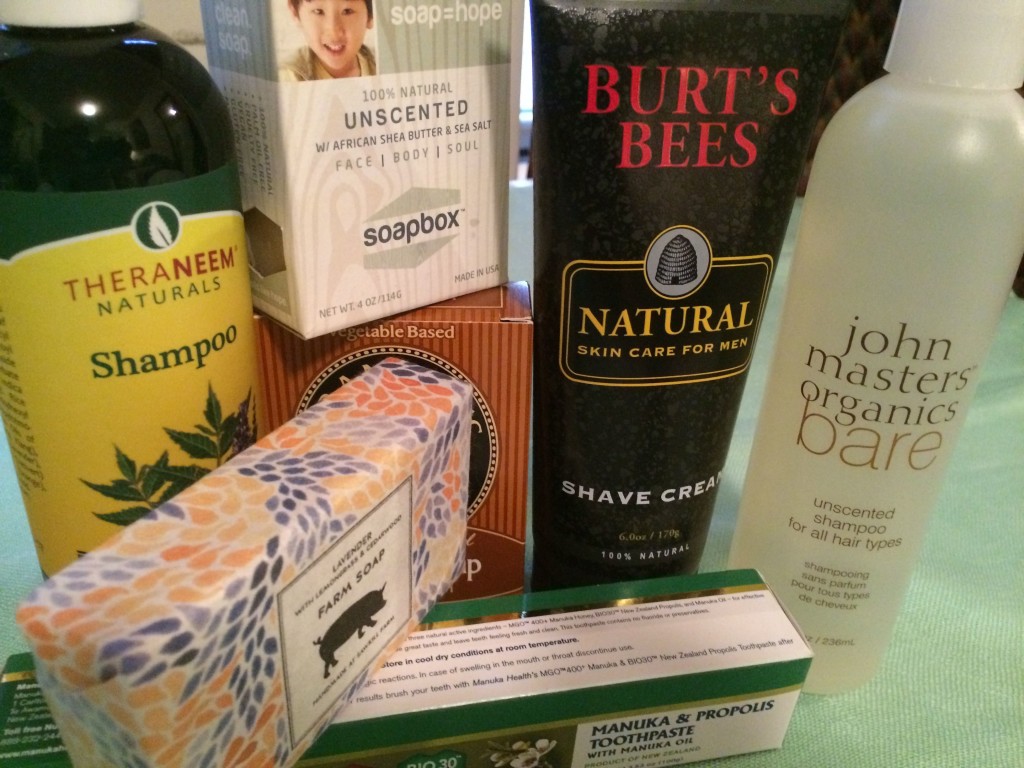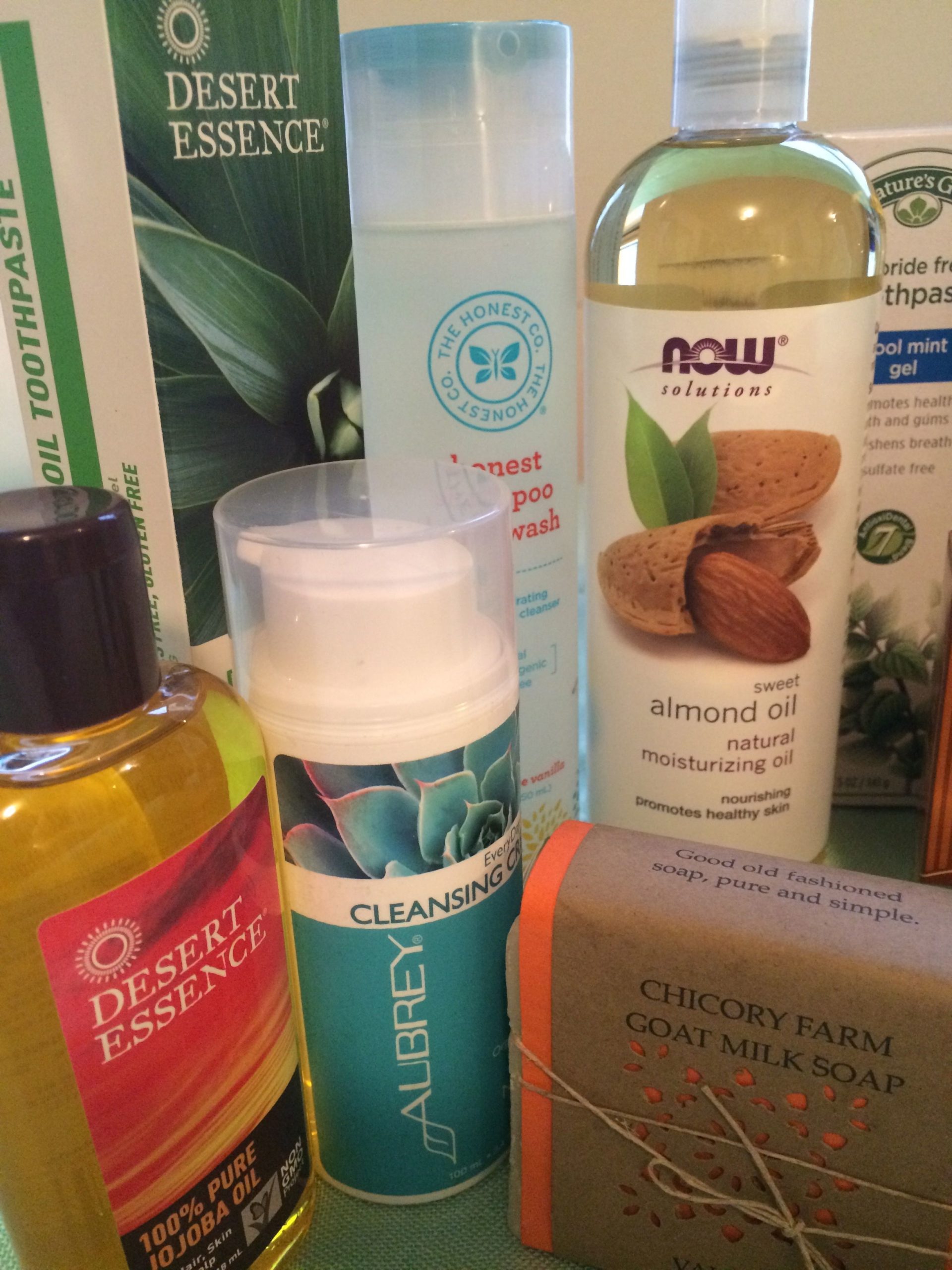If you’re Irish—even a smidge, like my nephews Thomas and Christian (one-eighth Irish)—a shout-out to you: Happy St. Patrick’s Day!!
Today, whether you’re officially Irish—or not—green is celebrated with a vengeance—from shamrocks and leprechauns, to green beer and green “couture”.
If we channel this same passion for green into “green clean”—making informed choices about everyday personal care products that we use on our body—we can enjoy better health, including balanced hormones, natural fertility, improved prenatal health and easier weight management.
Skin Savvy
Did you know…
…the average woman uses a dozen personal care products containing 168 chemical ingredients every day?
…the average man uses 6 products and is exposed to 85 chemicals every day?
…your skin is your largest organ? Our skin doesn’t absorb everything upon contact, but a hot shower that opens up your pores or vigorously rubbing your skin can enhance absorption.
…certain chemicals—known as “dermal penetration enhancers”—can increase the skin’s absorption of a topically applied product? And they’re in everything, from wrinkle creams to sunscreens.
 Daily Contact: What to watch out for…and why it matters
Daily Contact: What to watch out for…and why it matters
♣ Hand sanitizer (like Purell)
Conventional hand sanitizers can be potentially irritating to the skin. For example, Purell contains a few ingredients, including isopropyl alcohol, a petroleum-derived substance that can be extremely drying to the skin; isopropyl myristate, a solvent in cosmetic products used to impart a slick, sheer feel (but can cause clogged pores and acne); and tocopheryl acetate, a natural vitamin E, to which acetic acid is added, a combination that can potentially trigger allergic reactions.
Even more concerning: a recent study published in the scientific journal, PLOS One, showed that using hand sanitizer (in this study, Purell was used) and other skin products—especially if it left your hands wet prior to handling receipts—can significantly increase your exposure to Bisphenol-A (BPA), an endocrine-disrupting industrial chemical found in plastic containers and food cans, as well thermal receipts. Chronic exposure to BPA—even at low levels—has been linked to increased risk of weight gain, obesity and diabetes, as well as infertility, early puberty, neurological and behavioral disorders.
Making your own hand sanitizer is easy. Or, use Dr. Bronner’s Fair Trade & Organic Lavender Hand Sanitizing Spray (free of GMO alcohol and petrochemical thickener).
♣ Shampoo
Sodium lauryl sulfate and sodium laureth sulfate, a.k.a. SLS (sodium laureth sulfate is a milder form of sodium lauryl sulfate), are detergents commonly added to bath and beauty products, from shampoos and bath gels, to facial cleansers and toothpaste. It’s also found in dish soap. A foaming agent, SLS is what makes your shampoo and soap lather, and your toothpaste foam. Many studies have found a link between the use of products containing SLS and contact dermatitis (eg, itchy scalp, dry skin). SLS is also an eye and respiratory tract irritant.
Shampoo brands have built entire campaigns around fragrance—remember the commercial with the woman who had a “shampoo-orgasm” while using Herbal Essence in the shower? But, if the scent of your shampoo lingers hours after you’ve washed your hair, it’s because of phthalates, a synthetic estrogen used in bath and beauty products, like shampoos and body lotions, to hold scent and color. Like BPA, phthalates are endocrine disrupters, chemicals that can mimic or block hormone signals. Pthalates are linked to disrupted thyroid function, early breast development in girls and increased risk of breast cancer; it’s also considered an obesogenic chemical that has been linked to obesity and insulin resistance.
You’ll never find “phthalate” on on a product label. But, if you see “fragrance”, “perfume” or “parfum” on the label, you can be sure that phthalates are in there.
Check out your favorite health food store, Whole Foods Market or online resource for SLS-free, fragrance-free shampoos. Some brands include EO (Everyone) Hair Sulfate-Free Shampoo, Dessert Essence and Sweet Baby Shampoo.
♣ Soap
Frequent hand washing to prevent spreading infection is a good thing. Using an anti-bacterial soap, however, is a bad idea. The active ingredient triclosan (and related triclocarbon) is an anti-bacterial chemical that the Environmental Protection Agency (EPA) registers as a pesticide. Triclosan is commonly found in liquid hand soaps (including hand sanitizers) and body washes, as well as antibacterial or “odor-fighting” products, like toothbrushes, towels and cutting boards. According to the EPA, triclosan is linked to liver and inhalation toxicity—even low levels of triclosan may disrupt thyroid function.
Lead microbiologist for the Food and Drug Administration (FDA) Colleen Rogers says: “Certain ingredients in antibacterial soaps may contribute to bacterial resistance to antibiotics, and may have unanticipated hormonal effects that are of concern to the FDA.”
Triclosan is lipophilic, meaning that it can accumulate in fatty tissues of the skin and is absorbed in the skin. In the U.S., triclosan has been found in 97% of breast milk samples from lactating women and in the urine of 75% of people tested.
Personally, I like to stick to local, handmade soaps, like Chicory Farm’s goat’s milk soap (from the Finger Lakes) or tallow soap from Sawkill Farm (from New York’s Hudson Valley). Look for soaps that are naturally scented (from essential oils).
♣ Toothpaste
In addition to triclosan and SLS, which are in many commercial toothpastes, I also eschew the ingredient that I once thought was vital to dental health: fluoride.
Over 95% of toothpastes sold in the U.S. contain sodium fluoride. In 1997, the FDA required toothpaste manufacturers to add a poison warning on all fluoride toothpastes sold in the U.S. The warning reads: “Keep out of reach of children under 6 years of age. If you accidentally swallow more than used for brushing, seek professional help or contact a poison control center immediately.”
Why? When younger children brush their teeth, they’re likely to swallow more of the toothpaste than spit it out. Overconsumption of fluoride puts children aged 8 or younger—whose permanent teeth are still developing under the gums—at risk for dental fluorosis, which can manifest as white spots and streaks on teeth. Accidentally “eating” their toothpaste also puts children at risk for acute fluoride toxicity; symptoms include gastric pain, nausea, vomiting, headache and flu-like symptoms. This is more common that you might think. According to the Fluoride Action Network, there are over 23,000 reports a year, resulting in hundreds of emergency room treatments.
Among those who are susceptible (typically women), using fluoride toothpaste may cause a rosacea-like skin rash around the mouth, as well as canker sores (mouth ulcers).
In animal studies, sodium fluoride has had adverse effects on the male reproductive system, including decreased testosterone levels and reduced sperm quantity and motility.
Brushing with just organic baking soda and water is one option. Another is to seek out brands like Earthpaste, Dessert Essence and Botanique by Himalaya Neem and Pomegranate Toothpaste that are free of fluoride, SLS and triclosan.


